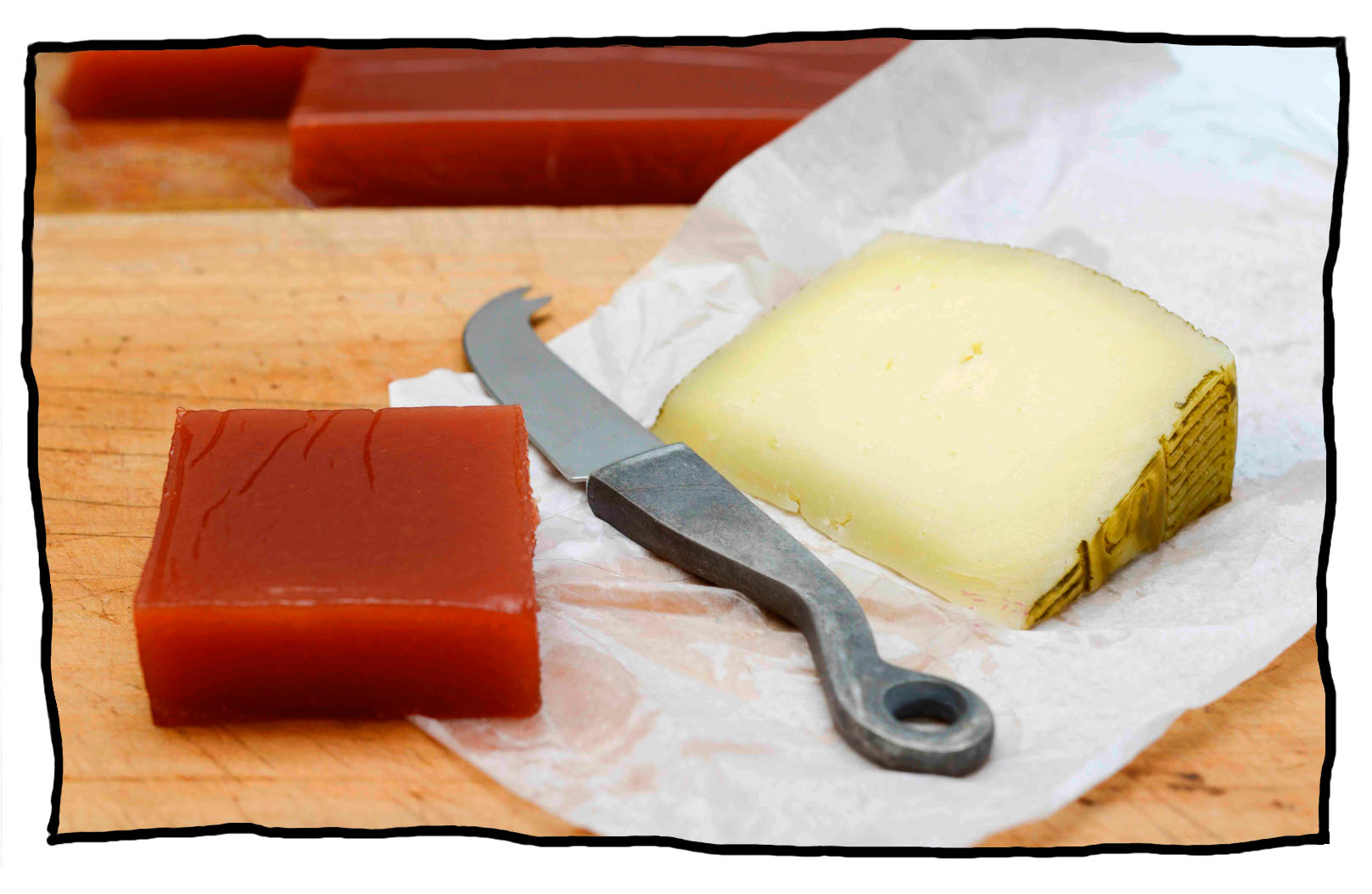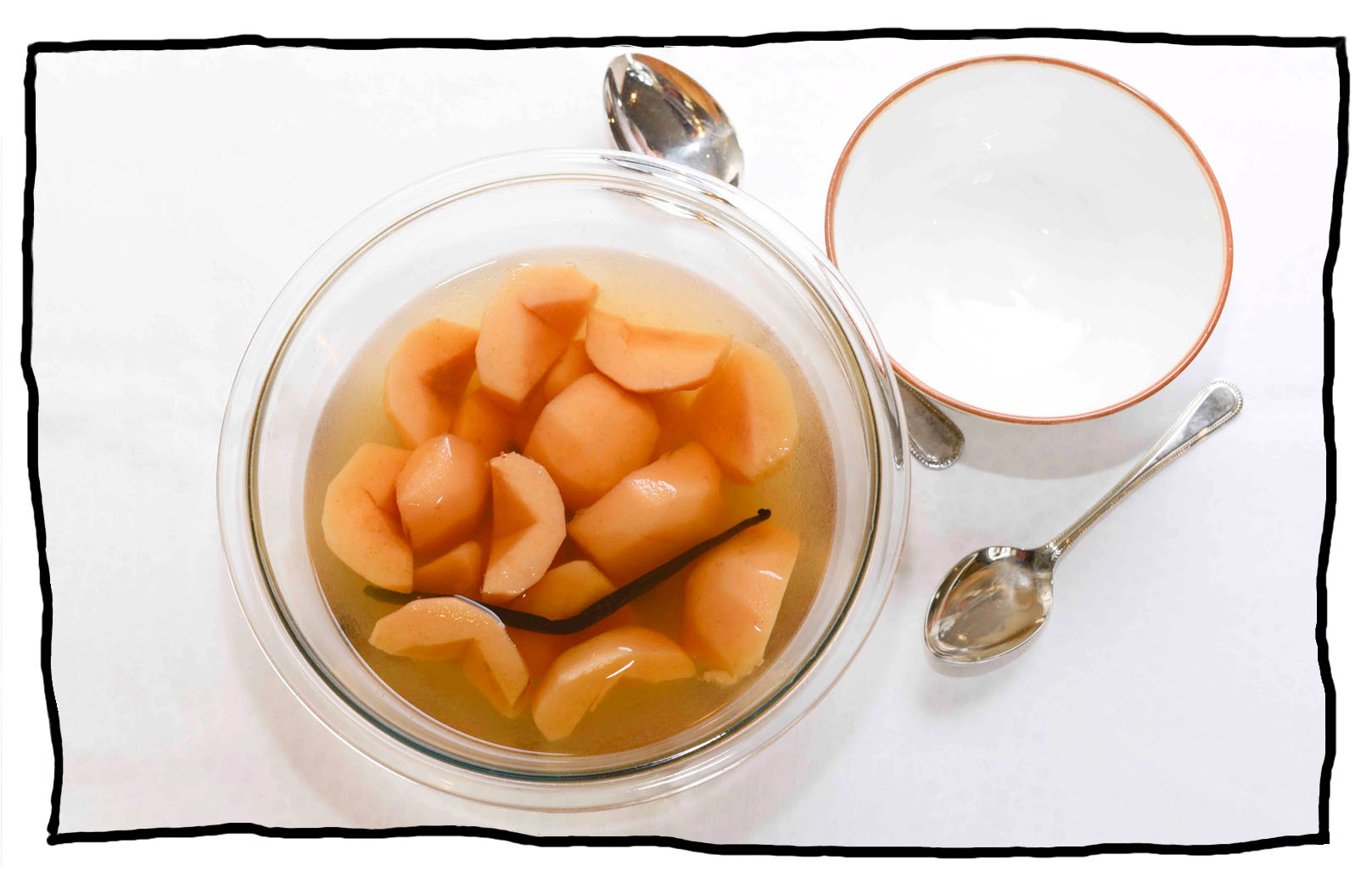QUINCES – April
smell as good as they taste
Quince belongs to the same family as apples and pears. Its shape is similar to a pear, but larger. It has lumpy yellow skin and hard flesh that is quite bitter so it can’t be eaten raw. The tannins that cause the tartness in the raw fruit mellow when cooked (and turn the fruit pink). They’re also loaded with natural pectin, so you don’t need to add any additional pectin to a jelly or paste you may be making.
«Quinces live to around 50 years
and grow to three to five metres tall.
They are adaptable and hardy and, like all fruit trees, are best planted in winter. Quinces will grow and produce best in a location with full sun and free-draining soil, although they will tolerate part-shade and dry spots. Quinces prefer a temperate location but still grow well in hot, dry and humid regions. Being deciduous, the trees are frost-hardy down to -20˚C. They flower early though, so avoid frost pockets. Quinces require less chilling than other deciduous fruits – between 100 and 400 hours – which even the warmest of northern coastal spots would achieve.
Quinces require very little care or attention. They’re susceptible to few pests or diseases. Quince leaf spot is common. Prevent the disease overwintering by raking up and disposing of affected leaves as they fall and by pruning out any dead shoots in winter. Feed and water plants well to ensure they grow more foliage. The caterpillar of the codling moth can burrow into quince in summer, resulting in fruit that is damaged. Try hanging our traps before flower burst to catch both the male and female moths. See here for how to make codling moth traps.
Branches can become quite congested and untidy if left untamed, so a thinning-out prune every second winter is a good idea to maintain the tree’s form and avoid a tangled mess. Rootstock growth can sprout from the base of the trunk – simply cut these off with clean secateurs while the shoots are young, as close to the trunk as possible.
Quince trees will benefit from a handful of balanced fertiliser like rock dust every spring.
As the fruit can be very large and heavy, it’s a good idea to remove the fruit for the first year or two until the branches are strong enough to sustain a crop.
Fruit is harvested in late summer to early autumn, when it turns from green to yellowish and becomes fragrant. The fruit will hang on the tree into the winter, but will be damaged by frosts. Pick by gently rolling the fruit upwards to detach the short stem from the branch. Try to avoid puncturing the skin or bruising the flesh. Any blemished or damaged fruit should be used immediately. Store unblemished fruit in single layer trays, making sure the fruit aren’t touching each other. Quinces should store in a cool spot for two or three months.
Good varieties to plant:
‘Smyrna’ has large, furrowed, golden-yellow fruit.
‘Van Deman’ is an earlier ripening variety with large, bright-yellow-orange fruit.
‘Taihape’ has large fruit with smooth, yellow skin.

MEMBRILLO (Quince paste)

POACHED QUINCES
Website designed by www.thecornerstorecollective.com
Developed by Richard Hpa